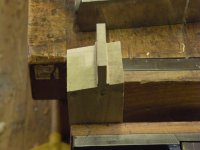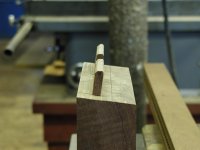I notice that a number of posts express some surprise that these old craftsmen were able to figure out solutions to design problems that may seem to us today to require "book learning".
I have often said of my own profession, Naval Architecture, that people have been building ships that worked quite well since long before we knew how - in that case for thousands of years - because the earliest scholarly knowledge that was published on the subject is only about 250 years old today. As recently as 100 years ago, the very best hull forms in the world were developed using hull models whittled by eye by a person with little formal education, but who had built a thousand of boats.
It seems to me that this occurs because those who actually build things get a lot of feedback which influences their next evolution, but I believe that they also develop an inate sense of physics, strength of materials, metalurgy, etc , in their day to day work.
Speaking from my own experience; as a person who built things early in life, I found that the book learning helped understand the intuition that had already developed by practice as much as it informed it.
By way of example, taking a strength of materials course would help one understand why through tenons in chair rails best have small ledges top and bottom, but it would not teach you to make them so.
Karl


